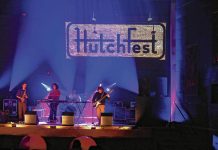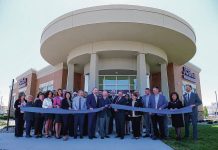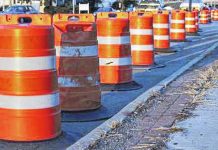Community residents were asked if they really understood why diversity, inclusion, racial justice and equity are important to a community during a session sponsored by The United Way of Bartholomew County, along with several other organizations.
The event, “Understanding and Building Equity in Community,” was at The Commons in downtown Columbus Thursday presented by the National Equity Project, an Oakland, California-based non-profit that seeks to help communities achieve equity for historically under-served populations through education. About 100 community leaders, city officials and local activists attended.
Brett Bradshaw, a senior associate at the National Equity Project who helped lead the conversation, said the idea was for participants to reflect on how “equity” can help communities thrive economically and socially and become places where people feel like they belong.
Bradshaw defined “equity” as “the proactive development and reinforcement of policies, practices, attitudes and actions that produce equitable power, access, opportunities, treatment, impacts and outcomes.”
“Equity is about outcomes,” he said. “It’s about how people feel and how they experience life … One of these things that (communities need to do) is to eliminate the current existing predictability of doing well, not doing well, feeling welcome, feeling ‘othered,’ being successful or failing that currently correlate with some social factors — race, gender, class,” he said.
“Sometimes it’s the intersection of those things. We would have a more equitable state if there wasn’t a predictability. Right now, there is a deep, profound predictability and it goes as far as unemployment rates, home ownership rates, educational attainment rates, safety and health outcomes,” he said.
Bradshaw and Erik Fermin, associate at the National Equity Project, led participants through a 2.5-hour-long series of small group activities and discussions that were designed to encourage interaction and reflection among participants to challenge preconceptions and feelings surrounding what an equitable community looks like.
The presenters told participants that communities need to go beyond just promoting diversity, which Bradshaw said only “describes the presence of individuals from various backgrounds and/or various identities.”
Inclusion, on the other hand, brings the perspectives and contributions of everyone to the table and “equitably distributes power and incorporates their needs, assets and perspectives into the design and implementation of processes, policies, activities and decision-making,” Bradshaw said.
“If you focus solely on diversity and not look at inclusion or look at anything that might change the structure, it’s a little bit of a bait and switch,” he said. “Let’s bring different kinds of people in, but if we don’t address the structural conditions (that create inequities), then it might even perpetuate and grow inequities or unequal conditions.”
Additionally, Bradshaw and Fermin challenged participants to acknowledge the historical and current sociopolitical conditions that have marginalized certain ethnic and racial groups in the United States.
“It’s about acknowledging — and I am speaking of myself as a white man — history, conditions and the power differentials,” Bradshaw said. “… Sometimes it involves us looking in the mirror a little bit about how we operate.”
Fermin said community leaders and residents should to use an “equity lens” when looking at local issues and taking action.
“An equity lens allows us to look at what we see and then ask what our beliefs are around that,” Fermin said. “If I’m driving through the bad part of the neighborhood, wherever that is in Columbus. You know, the part where you roll up the windows and lock the doors. Instead of saying, ‘This is a bad neighborhood,’ can we question, ‘How is it that this neighborhood came to be?’ If my view is that this is just a bad neighborhood and there is nothing we can do about it, my actions are going to be very different than asking, ‘How did this neighborhood come to be and what were the factors affected this neighborhood. What can we do about those factors?’”
Amber Fischvogt, director of CivicLab, which helped organize the event, said she hoped participants came away with insights that they can take back to their organizations.
“(This event) was about how we can start that community conversation around equity that not only goes for today, but beyond that and into the community,” she said. “Hopefully, we can continue this conversation as we move forward.”
CivicLab, the Heritage Fund — The Community Foundation of Bartholomew County, Faurecia and Community Education Coalition partnered with United Way to host the event.
[sc:pullout-title pullout-title=”Welcoming Community Survey” ][sc:pullout-text-begin]
The Heritage Fund – The Community Foundation of Bartholomew County compiled a new survey on how welcoming residents feel Columbus is.
While the results showed an overall improvement since past surveys, Columbus as a whole is "unevenly welcoming," particularly to lower socioeconomic classes, racial and ethnic minorities and the LGBTQIA population, the survey showed.
Nearly two out of every five respondents said they disagreed or strongly disagreed that all people in Columbus receive fair treatment, equal opportunities and that there are "well-known and actively used mechanisms" to handle cases of discrimination and prejudice.
Additionally, one in four respondents said they had been discriminated against in Columbus.
More than 1,770 people completed the survey, which asked participants about access to information, inclusiveness, friendliness and the ability to get involved, entertainment, equal opportunity and fair treatment for all.
This was the third welcoming survey conducted by the Heritage Fund since 2004.
Visit heritagefundbc.org/welcoming for more information about the survey.
[sc:pullout-text-end]




